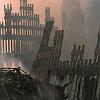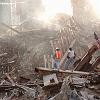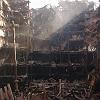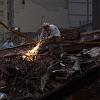
Ground Zero
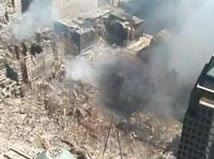
This still image from a video was captured on 9/15/01 from an Army Black Hawk helicopter.
Lo-Res Video 10.5MB
Hi-Res Video 21.5MB
Rescuers started with buckets and shovels, moving cautiously as they searched for survivors. It was quickly apparent that heavy machinery was needed to move large pieces of steel.
A total of 108,342 trucks and barges transported material to the Fresh Kills facility on Staten Island, where it was thoroughly sifted to help identify human remains, personal effects and physical evidence from the hijacked planes. Some structural steel went directly to recyclers.Due to the volatile nature of Ground Zero, engineers were on site. The stability of the wreckage and the density of the debris were extremely variable due to the configuration of the collapse. Innumerable dangers lay concealed within. Engineers conducted emergency damage assessments and supported the fire department in its search for survivors. Building drawings and area inspections were necessary to find the most logical places, such as stairwells or elevators, where people might have attempted to escape.
Local ironworkers were among the first to respond to the tragedy. They knew their services and expertise would be needed to cut and remove the mangled iron and steel of the World Trade Center. Throughout the cleanup, ironworkers from around the country worked at Ground Zero.
The operation became a search and recovery effort on October 9, after only six people had been pulled from the wreckage alive, all on the first day of rescue. The intense fires that bent structural steel were most likely fueled by paper and office furniture within the wreckage. Flames were finally out by December 20, 2001.
Over the next eight months, Ground Zero was cleared of debris. Ironworkers removed the final steel column that remained standing at Ground Zero on May 28, 2002. Two days later, the column was ceremoniously transported from the site, marking the official end of the cleanup at what was once the 16-acre World Trade Center.
The direct financial cost of the World Trade Center cleanup is estimated to be about $83 billion. This figure includes the destroyed and damaged buildings, lost tenant assets, cleanup costs, victim assistance, subway damage, and overtime for city employees.
